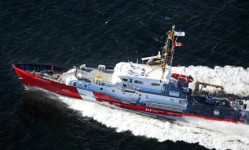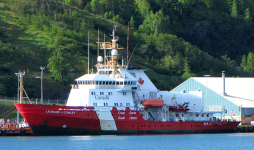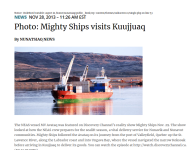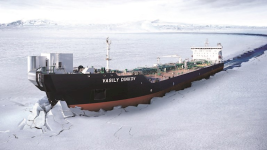The RCMP works closely with our partners on several border initiatives. These programs include:
- Marine Security Enforcement Teams
- Marine Security Operational Centres
- Integrated Cross-Border Maritime Law Enforcement Operations (Shiprider)
- Integrated Border Enforcement Teams
- Border Technology Program
Border Integrity program
As Canada's national police force, the RCMP helps protect our borders in: the air, on land, at sea, and in the Artic. This includes monitoring areas between official ports of entry, maritime ports and airports.
The Border Integrity program recognizes the importance of keeping pace with modern criminal threats and anticipating future challenges. It has a strategy in place to effectively monitor, assess and respond to threats at our border, and working with partners to deploy resources where they are needed most. This strategy is based on three priorities:
- Intelligence: gathering and synthesizing information from a variety of human and technological sources.
- Integration: enhancing collaboration with other RCMP programs to address sophisticated, borderless crime.
- Partnerships: strengthening and leveraging partnerships to ensure the RCMP has a complete threat picture at the border, informing an appropriate response.
This strategy is designed to strengthen the RCMP's ability to detect, deter, and disrupt cross-border criminal activity, and helps to ensure the safety and security of Canadians.
Note
A "port of entry" refers to a location by which people and goods may enter a country legally.
Combatting cross-border crime
Border integrity is a crucial piece of Canada's national security, protecting Canadians from a host of criminal threats. The RCMP works alongside government and law enforcement partners on both sides of the Canada-U.S. border.
The RCMP Border Integrity program tackles increasingly complex border investigations by:
- securing the length of Canada's border between designated ports of entry
- participating in joint operations with Canadian and American law enforcement partners, such as the United States Customs and Border Protection
- enhancing operational awareness of border threats and emerging criminal trends
- identifying, investigating and disrupting criminal activity at the Canadian border that threatens Canada and our allies
The RCMP takes an intelligence-led approach to border security, ensuring resources are directed to where they will have the greatest impact. We maintain a presence in the highest-risk regions between ports of entry, including along the border in British Columbia, Ontario and Quebec. At the ports of entry, we provide assistance and support to our partners to address inbound and outbound criminal threats.
Teams and resources for operations
The RCMP contributes to various border enforcement teams, working closely with both Canadian and U.S. partners.
Integrated Border Enforcement Teams are comprised of officers from five core agencies:
- RCMP
- Canada Border Services Agency
- United States Immigration and Customs Enforcement (represented by Homeland Security Investigations)
- United States Customs and Border Protection represented by the United States Border Patrol
- United States Coast Guard
Marine Security Enforcement Teams are comprised of mid-shore patrol vessels that protect the eastern marine entrance to Canada. These teams gather intelligence and respond to threats on the water. They are led and operated by the Canadian Coast Guard, with enforcement support from the RCMP.
Marine Security Operational Centre consists of six Canadian partners who have a stake in maritime security:
- RCMP
- Canada Border Services Agency
- Canadian Coast Guard
- Department of National Defence
- Transport Canada
- Department of Fisheries and Oceans
These organizations work together to gather intelligence on border threats and determine which agency is best positioned to respond. There are Marine Security Operational Centres located on the east and west coasts, as well as on the Great Lakes. The coastal centres work closely with Five Eyes partners to identify suspicious vessels bound for Canada.
Integrated Cross-Border Maritime Law Enforcement Operations (Shiprider) involve vessels jointly crewed by specially trained and designated Canadian and U.S. law enforcement officers, including representatives from the RCMP, the United States Coast Guard, and other police forces. These officers are authorized to enforce the law on both sides of the international boundary line, securing our shared border without violating the sovereignty of either nation.
Border Technology Program develops short, medium and long-term technological solutions to crime at the border, helping inform a response from law enforcement.
Border integrity partners
The RCMP Border Integrity program works with a number of domestic and international partners to maintain the security and integrity of the Canadian border. These partners include but are not limited to:
Domestic law enforcement partners
- Municipal police
- Provincial and territorial police
Federal departments and agencies
- Canada Border Services Agency
- Canada Revenue Agency
- Canadian Coast Guard
- Department of Justice
- Department of National Defence
- Global Affairs Canada
- Health Canada
- Immigration, Refugee and Citizenship Canada
- Public Safety
- Transport Canada
International law enforcement partners
- Bureau of Alcohol, Tobacco, Firearms and Explosives
- Drug Enforcement Agency
- United States Border Patrol
- United States Coast Guard
- United States Customs and Border Protection
- United States Homeland Security Investigations
- United States Immigration and Customs Enforcement










